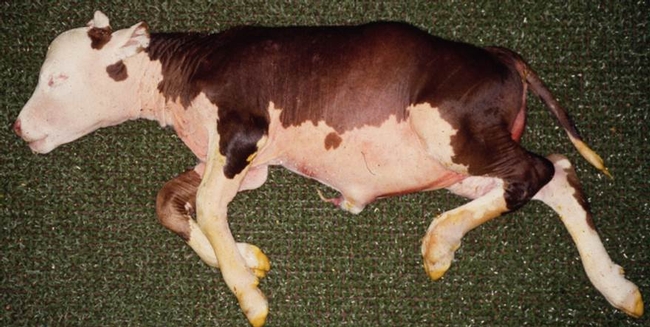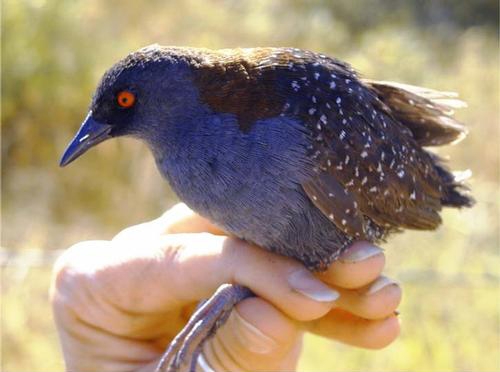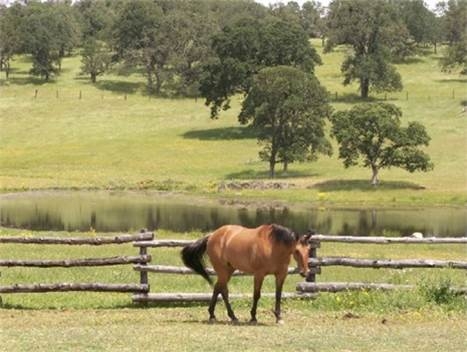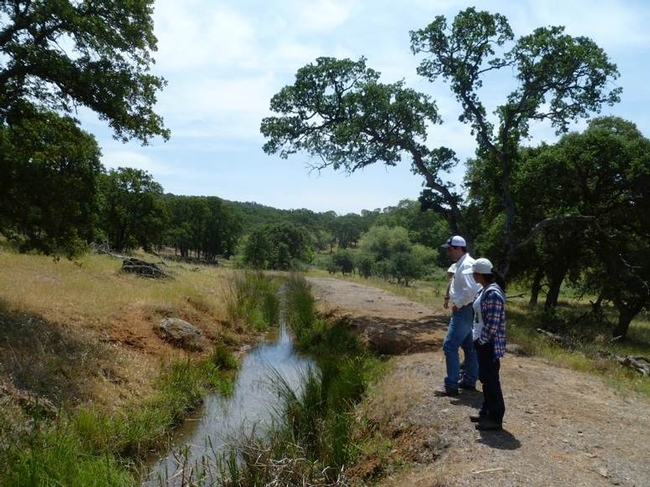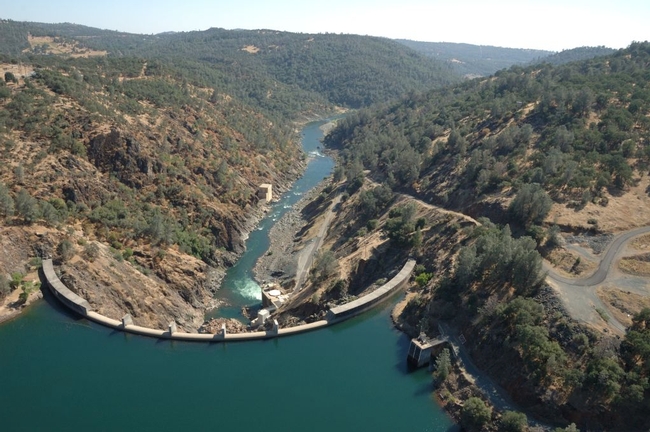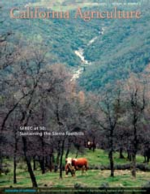Posts Tagged: Sierra Foothill Research and Extension Center
To solve deadly cattle disease, ranchers collaborate with UC researchers at UC ANR research center
UC Sierra Foothill Research and Extension Center hosts cattle for research to commercialize vaccine
After more than 60 years of working closely with University of California Division of Agriculture and Natural Resources researchers to identify and learn how to manage a disease that causes the death of up to 90,000 calves annually, ranchers are optimistic that they are on the home stretch to getting a vaccine that will protect cattle.
Caused by tick-borne bacteria, the disease commonly known as foothill abortion is a leading cause of economic loss for California beef producers. To combat the disease, the California Cattlemen's Association is sponsoring UC vaccine trials, now in the second year, in commercial herds throughout California, Nevada and Oregon, which will facilitate commercial licensing of the product. At the same time, the UC researchers are continuing studies at the Sierra Foothill Research and Extension Center to identify the best time to vaccinate and potential side effects of the vaccine on the animals' health.
Through a 30-year partnership with the cattle industry, UC Davis veterinary immunologist Jeffrey Stott has been leading the effort to identify the organism causing the devastating disease and has successfully developed a live vaccine to protect cows against the disease.
“The vaccine is huge for the industry,” said Tom Talbot, Bishop beef producer and livestock veterinarian. “I don't think we fully understand the magnitude of the economic loss suffered from aborted calves.”
While Talbot was attending the School of Veterinary Medicine at UC Davis in the 1970s, his father purchased some cattle to breed in the mountains near Bakersfield. The following autumn, none of the calves from the Talbots' new heifers survived.
As an active member of the California Cattlemen's Association, Talbot has remained involved in the search for a cure.
While research trials demonstrated the vaccine was more than 95 percent effective in preventing the disease, UC researchers faced a major hurdle to making the vaccine commercially available to ranchers. USDA Center for Veterinary Biologics, which regulates animal vaccines, required detailed data on how the timing of vaccine delivery may impact embryo development following breeding.
“Gathering this information was not going to be easy, as it required applying careful experimental control on when animals were bred relative to when the vaccine was delivered and making frequent observations on a very large number of animals,” said Jeremy James, UC Sierra Foothill Research and Extension Center director.
The beef cattle industry and UC researchers realized that UC Agriculture and Natural Resources' 5,721-acre Sierra Foothill Research and Extension Center would provide an ideal outdoor laboratory for the critical research. The Pajaroellobacter abortibovis bacterium and pajaroello ticks that transmit the bacteria to cows naturally occur in the foothill pastures and the facility has a full-time, onsite staff to monitor the animals and collect the data.
“We're bringing together industry members and researchers in a research center framework in way that hasn't been done before for vaccine development,” said James.
The bacteria are endemic in California's coastal range and in the foothill regions of California, Southern Oregon and Northern Nevada.
Solano County-based Detar Livestock, which operates throughout California and part of Oregon, supplied 330 heifers for the experiment in 2014. Rancher Gabe Detar quickly recognized how this partnership might benefit industry across the state.
“They vaccinated half of them and there were zero abortions,” Detar said. “The cows without vaccinations had quite a few. It was a huge difference. The vaccine worked.”
This year Detar is contributing another 330 heifers. It takes 13 months to run an experiment because the vaccine has to be given to the heifer at least 60 days before she becomes pregnant, then it takes nine months until she gives birth to see if the calf survives.
In December, Stott and Myra Blanchard, a researcher with the UC Davis School of Veterinary Medicine, will begin inoculating cattle with the live vaccine for the disease, also known as epizootic bovine abortion.
The success of this research effort to defeat the cattle disease hinges on trust between the ranchers, UC scientists and the staff at the UC Sierra Foothill Research and Extension Center.
“The trust has to go in all directions,” James said. “The rancher has to trust that we'll take care of their animals because 300 cattle is a large investment. Likewise, the researchers have to trust the producers to supply the quantity and quality of animals they need to complete the work and for the staff at the Sierra Foothill Research and Extension Center to manage the animals exactly as required under their research protocols.”
Ranchers hope the vaccine will become commercially available soon to provide relief from foothill abortion disease. Until then, only the cattle participating in the research can receive the experimental vaccine.
“The disease can kill upwards of 60 to 70 percent of fetuses in infected cattle, which can jeopardize a cattle producer's business,” said Stott.
Funding for the study has been provided by the U.S. Department of Agriculture, the California Cattlemen's Association and a UC Proof of Concept Discovery Grant (grant ID no. 212263) from UC's Office of the President, with additional funding from the Russell L. Rustici Rangeland and Cattle Research Endowment and the UC School of Veterinary Medicine's Center for Food Animal Health.
For more information on how to manage cattle to prevent foothill abortion disease, visit http://anrcatalog.ucanr.edu/pdf/8566.pdf.
California black rail likes leaks
While Californians are tightening their pipes to conserve water during this fourth year of drought, the California black rail might say, “Let it leak,” if it could speak.
The rare bird species makes its home in marshes created in large part by leaky pipes, stock ponds, irrigation tailwater and unlined canals. Even the springs that support some habitat may rely on water flowing from leaky canals. In 1994, UC Agriculture and Natural Resources scientists found the small, red-eyed bird with the black breast and speckled black feathers at UC ANR's Sierra Foothill Research and Extension Center. Since its discovery, a group of scientists have been exploring the effects of water management and climate change on the bird in Sutter, Butte and Yuba counties.
California black rails, which can be heard more often than seen, largely depend on humans and irrigated agriculture to provide the shallow flowing water they use for habitat.
Because most of the rangeland in the area is privately held, and includes irrigated pasture for livestock, Lynn Huntsinger, professor in the Department of Environmental Science, Policy and Management at UC Berkeley, wondered if property owners would be willing to maintain wetlands to support wildlife.
With the help of UC ANR Cooperative Extension advisors Glenn Nader and Roger Ingram, Huntsinger conducted a survey of 1,000 landowners in the three counties.
Property owners responding to the survey said the primary reason for maintaining ponds and wetlands is to reduce wildfire risk, but they also like the birds and wildlife that are attracted by wet areas. However, Huntsinger worries that the “accidental wetlands” may dry up as the drought increases the pressure on people to conserve water by fixing leaks and replacing canals built during the 19th century Gold Rush with pipes.
Most of the farmers and ranchers buy water from a water district so Huntsinger sees working with water districts as a key to the sustainability of wetlands for wildlife.
“Water is going to be more expensive and harder to access given the trends in weather and population demand,” she said. To predict how long landowners will continue to maintain wetlands if water prices rise, Huntsinger is working with Jose Oviedo, an environmental economist in Spain.
More and more, she says, it seems that we are facing tradeoffs between “goods”— saving water is good and preserving wildlife habitat is good. “We need flexibility and adaptation rather than all or nothing choices. After all, we are creating the future landscape of California,” Huntsinger said.
Huntsinger's study is just one facet of a California black rail study that involves scientists with different kinds of expertise.
Steve Beissinger, professor in the Department of Environmental Science, Policy and Management at UC Berkeley, has been studying black rail behavior for years and continues to monitor how many sites in the Sierra foothills the small birds use as habitat.
Norman Miller, a Lawrence Berkeley Laboratory hydrologist, is developing models to understand the water dynamics and sustainability of the wetlands habitat.
Marm Kilpatrick, assistant professor in the Department of Ecology and Evolutionary Biology at UC Santa Cruz, studies how concern about mosquito-borne West Nile virus may affect landowners' decisions to maintain wetlands.
“It is a novel ecosystem, offering habitat engineered by people and their livestock that happens to offer the black rail what it needs,” Huntsinger said. “We just don't know enough about conservation in this kind of situation. Managing traditional landscapes is common in Europe, but rare in the United States.”
For more information about the California black rail, see the California Agriculture article “California black rails depend on irrigation-fed wetlands in the Sierra Nevada foothills.”
Below, UC Berkeley graduate student Nathan Van Schmidt describes research at UC Sierra Foothill Research and Extension Center on how the rails cope with drought, seasonal hydrology regimes, and the rescue effect.
An initiative to maintain and enhance sustainable natural ecosystems is part of UC Agriculture and Natural Resources Strategic Vision 2025.
UC receives PG&E land to expand research in Sierra foothills
The parcel, which is adjacent to the UC Sierra Foothill Research and Extension Center in Browns Valley, will be managed by UC to protect its natural resources. Bear Yuba Land Trust will hold the conservation easement on the Narrows property to ensure that it remains permanently protected and available for public benefit. The transaction closed today (Jan. 29).
Located on the Yuba River, the Narrows property is 60 miles northeast of Sacramento. UC Sierra Foothill Research and Extension Center has more than 5,700 acres of rangeland for scientists to study critical rangeland issues.
“We are excited to be able to manage this parcel because this new property will increase the size and connectivity between key research pastures at Sierra Foothill Research and Extension Center,” said Jeremy James, Sierra Foothill Research and Extension Center director.
Cattle grazing is a major tool to manage vegetation on rangelands and to enhance rangeland ecosystems. Although the Narrows land is too steep for grazing, it can be used to study a suite of critical natural resource processes.
“This is the first of several land transfers from PG&E to a public agency in the Yuba River watershed and the only in Yuba County,” said Marty Coleman-Hunt, Bear Yuba Land Trust executive director. “It's the culmination of over a decade of planning and work with local conservation groups and the Stewardship Council. The permanent protection of this land below Englebright Dam is critical for the health of the important Yuba River salmon fishery and public recreation for the lower Yuba River.”
“In partnership with the many organizations that make up the Stewardship Council, PG&E is pleased to permanently protect the natural resources and beauty of the Narrows parcel and watershed lands associated with our hydroelectric system for the benefit of current and future generations,” said Mike Schonherr, manager of PG&E's Land Conservation Commitment Department.
The research center encompasses river, grassland, oak woodland and riparian habitat types for studying beef cattle production, nutrition and health, rangeland water quality management, oak woodland restoration, native plant conservation and invasive plant management as well as monitoring and management of sensitive fish and wildlife species.
The center has many educational features including a series of nature trails and an education center on the Yuba River, which can be used by schools and community groups for outdoor education and outreach events.
Bear Yuba Land Trust is a non-profit, membership-supported group that promotes voluntary conservation of natural, historical and agricultural resources in the Bear and Yuba watersheds of the Sierra Nevada foothills. Each year, BYLT's stewardship team will monitor the conservation easement at the Narrows for conservation values like documenting the presence of native plants and animals. BYLT will hold the development rights forever, meaning the land will be permanently protected as a natural place and remain undeveloped.
For more information about PG&E's transfer of the Narrows property, visit http://www.stewardshipcouncil.org/land_conservation/planning_units/narrows.htm.
For more information about the UC Sierra Foothill Research and Extension Center, please visit http://sfrec.ucanr.edu.
For more than 100 years, University of California Cooperative Extension researchers and educators have been drawing on local expertise to conduct agricultural, environmental, economic, youth development and nutrition research that helps California thrive. UC Cooperative Extension is part of the University of California's systemwide Division of Agriculture and Natural Resources. Learn more at ucanr.edu.
Where's the beef?
By assigning a simple, 15-digit identification number to cows, UC researchers can track each one from conception to carcass, garnering valuable data for studies on cattle fertility, genetics, and health, and helping to select breeding animals with desirable beef characteristics such as flavor and tenderness.
In today’s beef market, an individual cow may change ownership many times during its lifetime as it travels from the ranch of its birth, to stocker and feedlot, to slaughterhouse, and finally supermarket or steakhouse. In the process, valuable data is lost along with the ability to “trace back” particular steaks to the original cow.
For several years, UC Davis researchers have been attaching a round, electronic ear tag to each newborn calf in the research herd at the UC Sierra Foothill Research and Extension Center, in the California foothills northeast of Sacramento.
The ear tags contain each cow’s unique radio-frequency-identification number, which is scanned with an electronic wand; the system is similar to that used to keep track of packages being shipped overnight or library books. Cowhands use a handheld device to enter information when the cattle are processed, which is transmitted via remote-access antennae to centrally located computer databases.
The integrated data-collection system is being used to undertake sophisticated studies on cattle genetics, with the ultimate goal of improving cattle breeding. “The genotype of some beef and dairy cattle may be better suited to grass-based productions systems,” UC Davis Cooperative Extension Specialist Alison Van Eenennaam and colleagues write in the April-June 2010 issue of California Agriculture journal. “It may also be possible to select animals that are able to grow to given size using less feed, or that are more resistant to certain diseases.
“These technologies also have great potential to enable the production of safer, more nutritious animal products. They may also allow for the selection of animals with a decreased environmental footprint and improved animal welfare due to lower levels of disease.”

Herd manager Dan Myers enters cattle
information into hand-held device.




